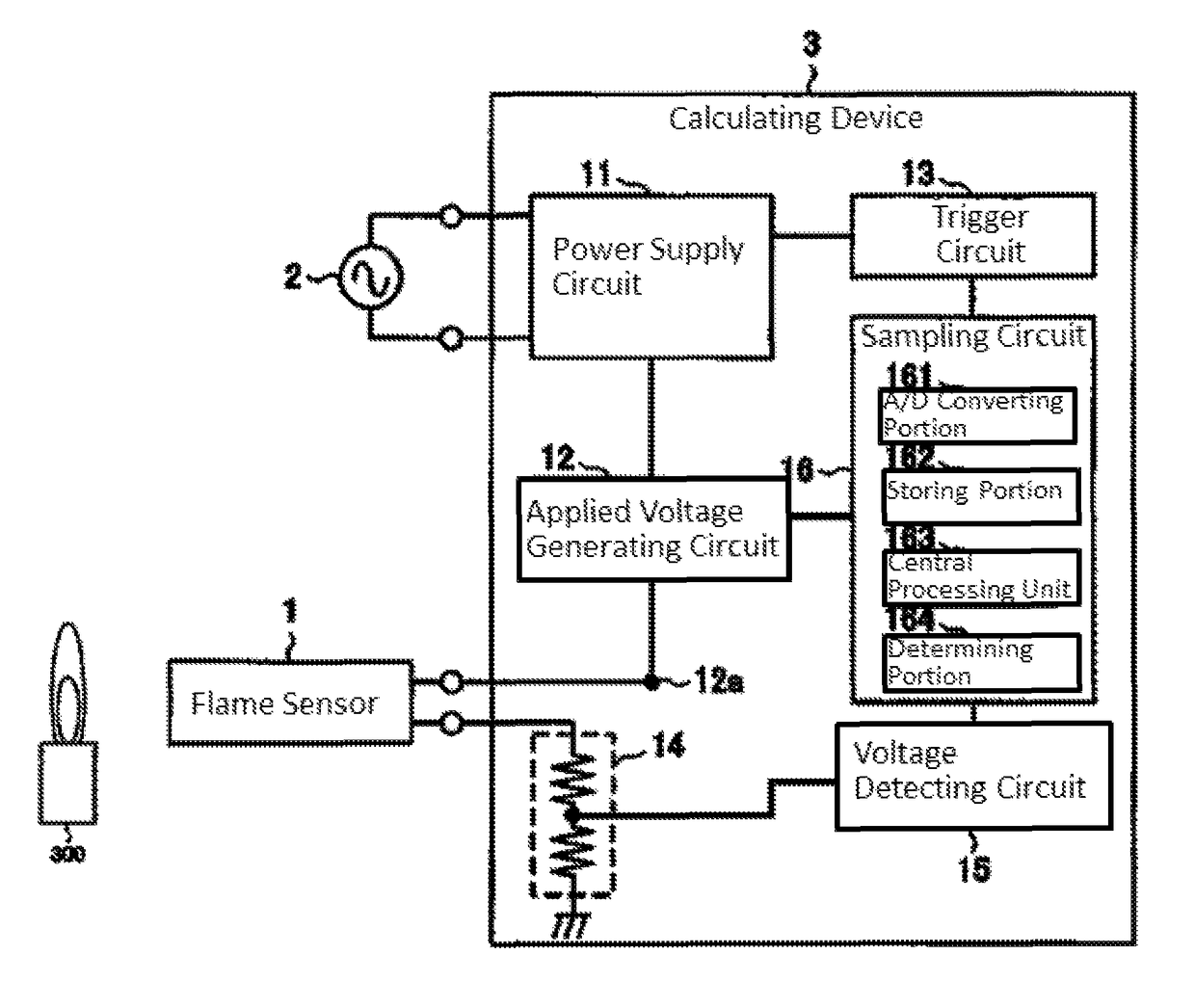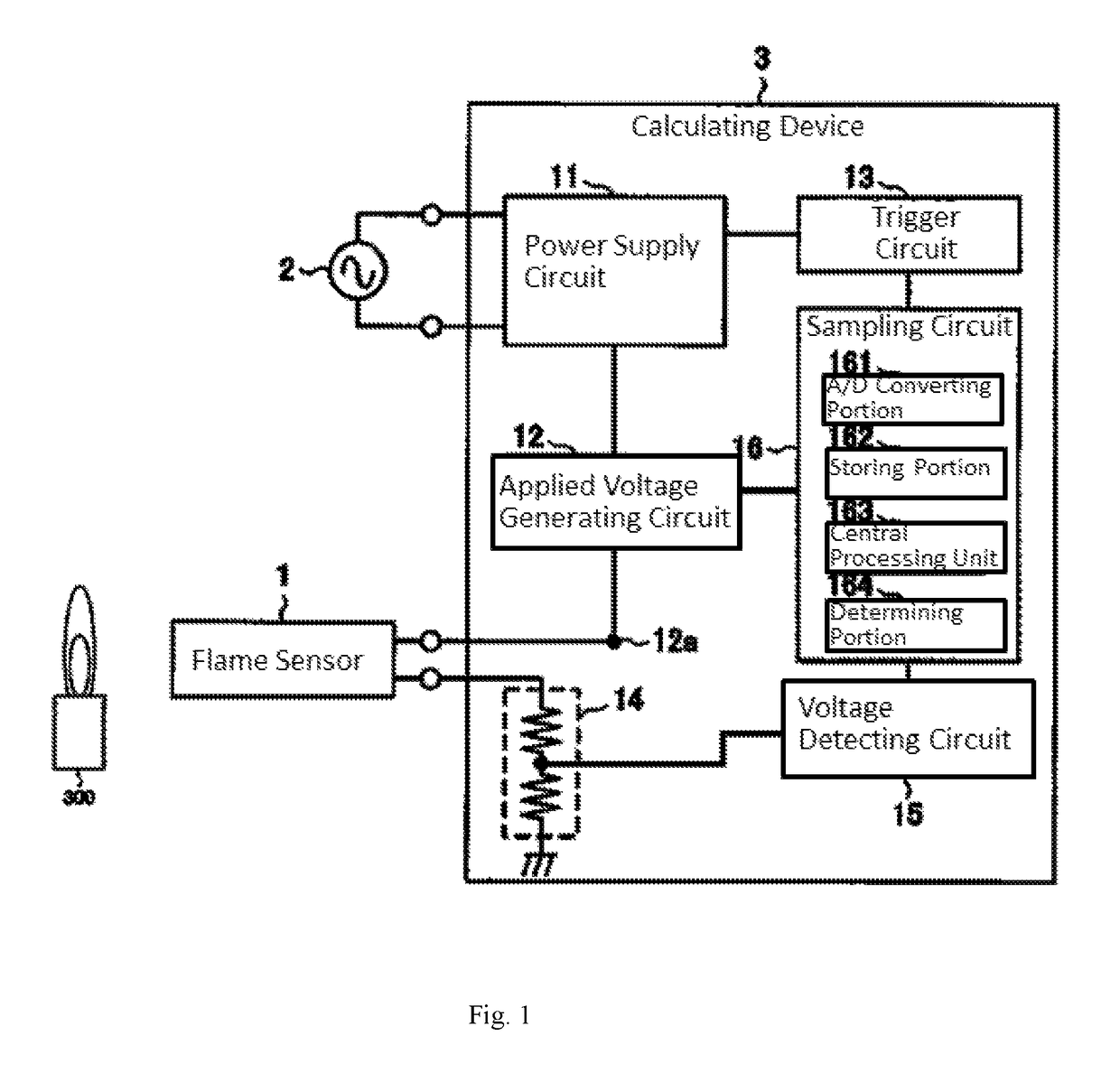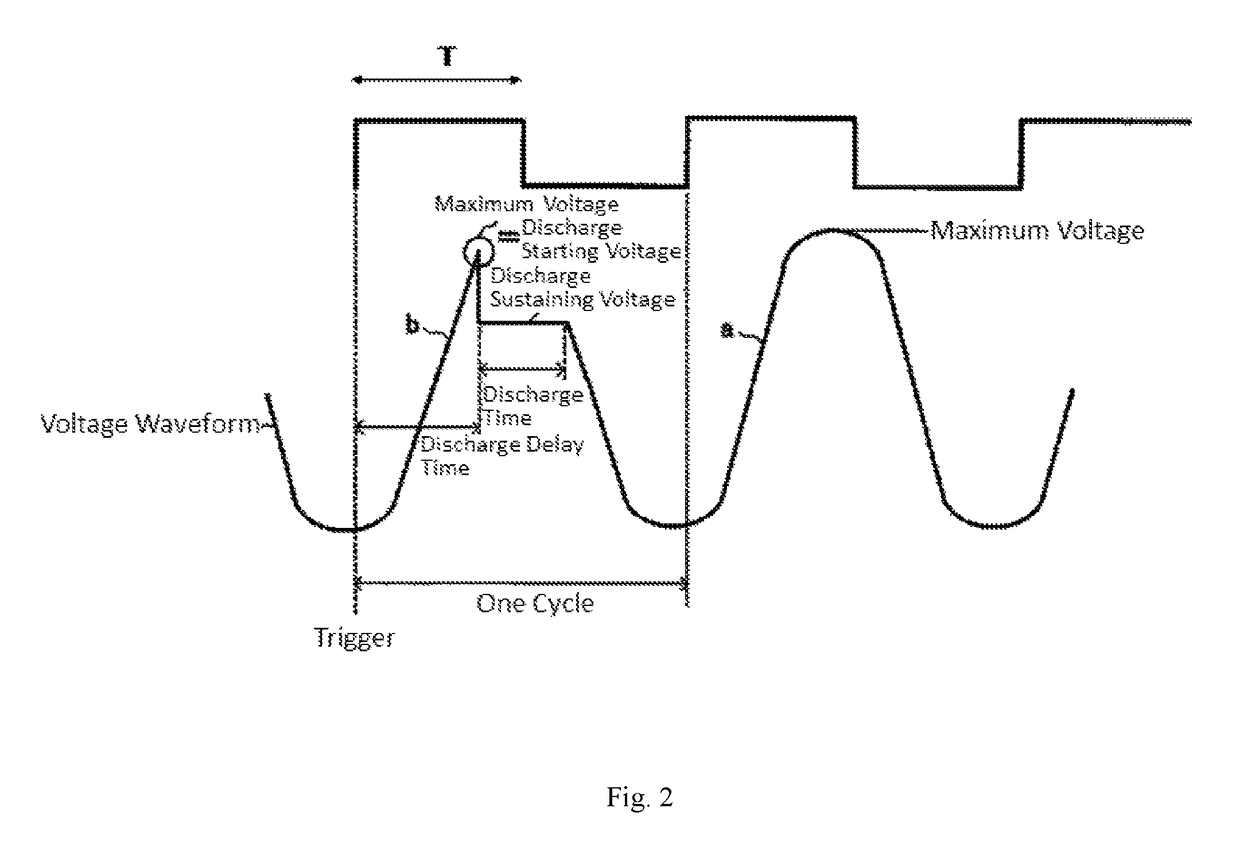Flame detecting system
a detection system and flame technology, applied in the field of flame detection systems, can solve the problems of time-consuming integration and difficulty in rapid detection of the presence or absence of flames
- Summary
- Abstract
- Description
- Claims
- Application Information
AI Technical Summary
Benefits of technology
Problems solved by technology
Method used
Image
Examples
example 1
[0047]Description will be made on the flow of FIG. 3 (step in the figure is denoted by Snn).
[0048]The operations of the central processing unit 163 are formed of steps for driving the flame sensor 1 with a pulse voltage and calculating the quantity of received light for the flame from a driven result of the flame sensor 1.[0049]A predetermined trigger is received and the flow is started (S00).[0050]The flame sensor is driven to operate the applied voltage generating circuit 12 to apply the voltage greater than or equal to the discharge starting voltage to the flame sensor 1 using a rectangular pulse T having a certain width (S01).[0051]The number of discharge times of the flame sensor 1 caused by repeatedly applying the pulse T to the flame sensor 1 for a predetermined number of times is counted by the signal obtained through the voltage detecting circuit 15 (S02).[0052]The discharge probability P is calculated from the number of discharge times and the number of applied pulses (S03...
example 2
[0060]It is assumed that the pulse width T and the discharge probability P are known in the condition A in Equation 8 described above. For a certain quantity of received light, the flame sensor 1 is activated for plural times using the pulse width T and the discharge probability P is obtained. In this case, it is assumed that a discharge probability is intended to be adjusted to an arbitrary value PC when the next pulse is applied (this is assumed as condition C). Then, a relationship between the condition A and the condition C is expressed as Equation 11. However, it is assumed that the quantity of received light Q is not changed. Equation 12 may also be obtained by performing transformation.
[0061]QBTCQATA=log(1-PA)(1-PC)[Equation11]Tc=TAlog(1-PA)(1-PC)[Equation12]
[0062]A pulse width Tc to be set in the condition C can be calculated from Equation 12. The discharge probability can be adjusted to the arbitrary (optimum) value PC in the next plurality of pulses TC. With thi...
PUM
 Login to View More
Login to View More Abstract
Description
Claims
Application Information
 Login to View More
Login to View More - R&D
- Intellectual Property
- Life Sciences
- Materials
- Tech Scout
- Unparalleled Data Quality
- Higher Quality Content
- 60% Fewer Hallucinations
Browse by: Latest US Patents, China's latest patents, Technical Efficacy Thesaurus, Application Domain, Technology Topic, Popular Technical Reports.
© 2025 PatSnap. All rights reserved.Legal|Privacy policy|Modern Slavery Act Transparency Statement|Sitemap|About US| Contact US: help@patsnap.com



